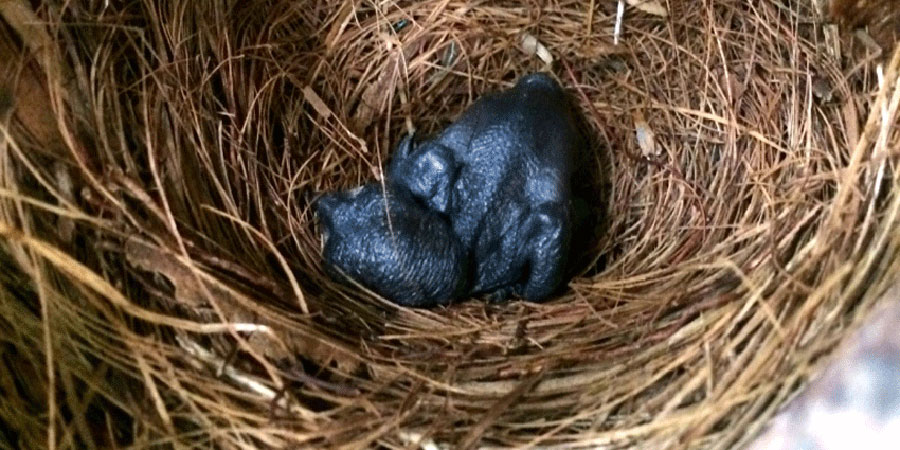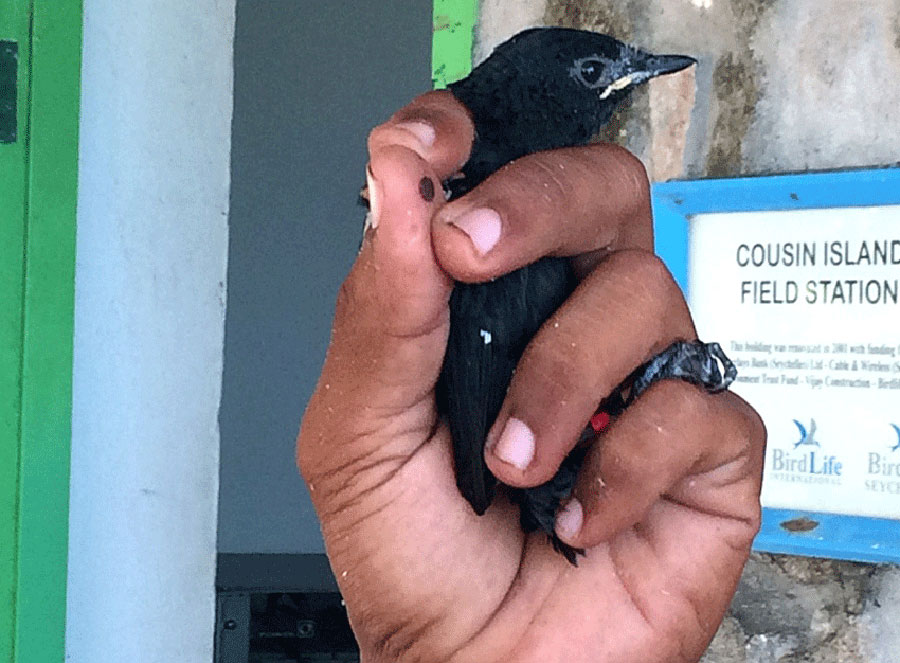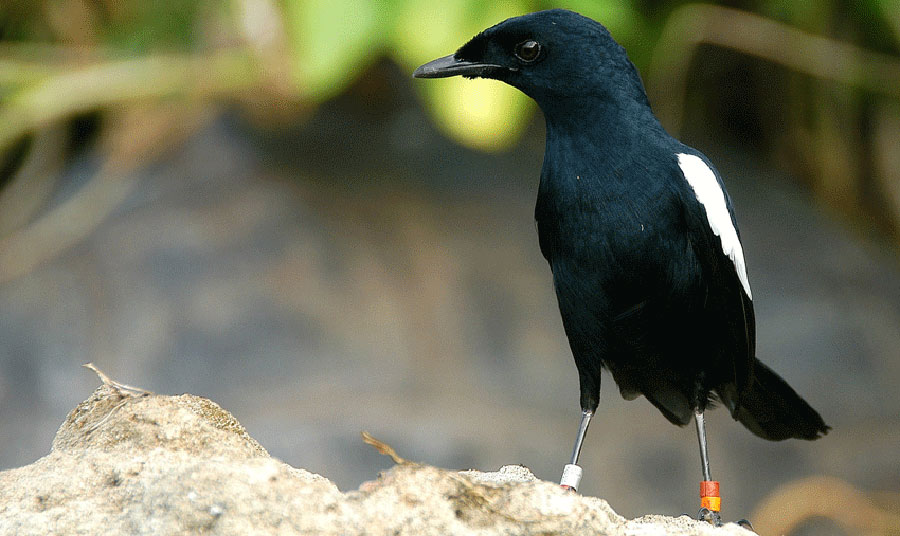
As a volunteer on Cousin Island Special Reserve, I feel privileged to have interacted with the Seychelles Magpie Robin (Copsychus sechellarum), a remarkable success story for the island and indeed, for Seychelles. Once found in respectable numbers on several islands, by 1970 this curious bird endemic to the Seychelles, was down to only 23 individuals due to predation by cats and rats, as well as reduced feeding habitat.
In the weeks I have been on Cousin, together with other Nature Seychelles volunteers and staff, we regularly monitor the Seychelles Magpie Robin (SMR) population, looking out for any changes in numbers and observing their behavior. Obligingly, this charming bird is not shy and usually gives us a hand in our work by coming to say hello. If they are not playing ball, you can whistle – even tunelessly if you are not a skilled whistler – and kick up the ground a little bit to expose some tasty treats to attract them.
The SMR, also known as Pi Santez in Creole, was in 1990 the most critically endangered species in the world and the most endangered in Seychelles. BirdLife International established a special recovery programme, and several birds were translocated to Cousin, Cousine and Aride Islands. Nine years later the total population had increased to 90 birds, with 25 individuals here on Cousin itself.
As the BirdLife partner in Seychelles, Nature Seychelles took over the management of Cousin Island and has since worked on ensuring this rare bird, in addition to other bird and marine species, continue to not only survive, but thrive.
SMRs tend to have territories that they do not roam far from, so when we are monitoring we can go to a territory and have an idea of which individuals we should be able to locate. On Cousin we have 10 territories, some of these areas have more SMRs than others and we can identify each bird by the colored rings around its legs.

Like robin species worldwide, the SMR has a habit of hanging out where people are working and disturbing the leaf litter. We often have several visits from SMRs when we are out raking the paths or pulling up invasive weeds. Walking around the island you can hear the distinctive song of the robin, perhaps before you turn around and spot one sitting on a branch behind you, waiting patiently for feeding time.
It was amazing to witness the ringing of a chick not long before it fledged. This procedure involves first taking measurements of the young bird’s beak, wing and foot, then weighing the chick and taking a blood sample. Then four identifying rings are placed around the legs, two on each side. On the right leg is a unique ID number ring and a red ring signaling that this bird was born on Cousin Island. The left leg has two colored rings, most likely one color chosen from each parent. Just today during our monitoring I spotted this same chick being fed lunch by its very vocal parents.

More Good news! I would like to put out my heartfelt congratulations to the proud parents of a newly hatched magpie robin chick, and apologies for any misunderstanding that would have lead to them swooping us as we took a peep at the little fellow. At approximately two days old, this chick is still a tiny, featherless ball, and some might say not much to look at, but in no time at all we will see downy feathers appear and he or she will be well on the way to taking flight.
At last count 37 Magpie-robins call Cousin home, not bad all things considered, and for what was once a bird with a bleak outlook, the future is looking pretty sunny for one of our favorite feathered friends.
Alicia Mason

